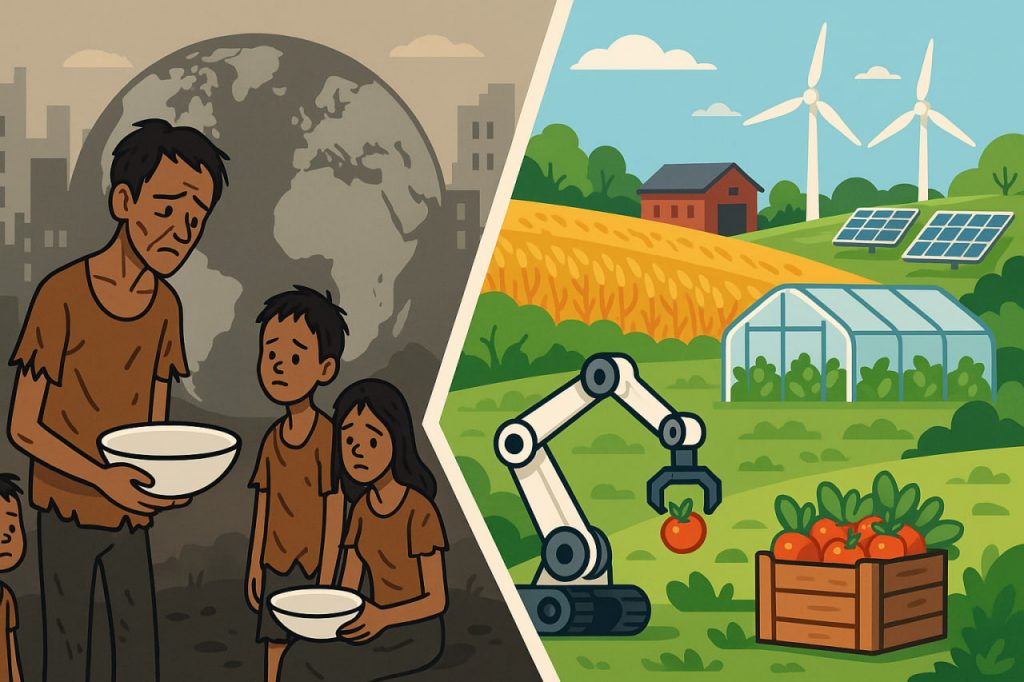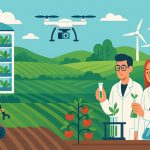Food — the foundation of human survival — is becoming increasingly scarce for millions across the planet. Despite technological progress and vast agricultural output, the world is facing a deepening food crisis. From droughts and wars to rising prices and unequal distribution, this crisis threatens not only individual lives but also global stability and peace.
The Scope of the Crisis
According to the United Nations World Food Programme (WFP), over 780 million people around the world suffer from chronic hunger, and more than 2 billion experience moderate or severe food insecurity. Entire regions — particularly in Africa, the Middle East, and South Asia — face shortages of essential crops such as wheat, corn, and rice.
The situation worsened after recent global disruptions: pandemics, wars, and climate disasters. Food prices have soared, supply chains have been disrupted, and millions of families can no longer afford balanced meals.
Key Causes of the Global Food Crisis
- Climate Change
Extreme weather events — such as droughts, floods, and heatwaves — are destroying crops and reducing harvests. Rising temperatures have made fertile regions less productive, while desertification and soil degradation threaten entire agricultural zones.
For instance, prolonged droughts in East Africa and the Middle East have left millions without reliable food sources. - Wars and Conflicts
Armed conflicts disrupt farming, trade, and transportation. The war in Ukraine, one of the world’s top grain exporters, caused massive shortages in countries dependent on its wheat and sunflower oil. Similarly, ongoing conflicts in Yemen, Sudan, and Syria have devastated local food systems. - Economic Inequality
Even when food is available, many cannot afford it. The global economy favors wealthy nations and corporations, while small farmers in developing regions struggle to access markets, tools, or credit. The poorest populations spend up to 60–70% of their income on food, leaving little for healthcare or education. - Overreliance on Industrial Agriculture
Large-scale farming focused on monocultures (single crops like corn or soy) exhausts the soil, depletes water, and reduces biodiversity. Industrial fertilizers and pesticides improve short-term yields but cause long-term ecological harm. - Food Waste
Shockingly, around one-third of all food produced globally — about 1.3 billion tons per year — is wasted. While some regions starve, others throw away edible food due to poor storage, transport losses, or overproduction.
Consequences of the Food Crisis
The food crisis has far-reaching social, economic, and political consequences:
- Malnutrition and disease: Millions of children suffer from stunted growth due to lack of nutrients.
- Migration: People leave rural areas or entire countries in search of food and stability.
- Conflict and instability: Scarcity fuels social unrest, riots, and even wars.
- Environmental degradation: Expanding agriculture to meet demand leads to deforestation and loss of biodiversity.
If global hunger continues to rise, experts warn that it could lead to a cycle of poverty, violence, and environmental collapse.
Solutions and Innovations
Solving the global food crisis requires a combination of technology, policy, and humanity.
- Sustainable Agriculture
Practices such as crop rotation, vertical farming, hydroponics, and agroforestry can restore soil health and increase yields without harming nature. Drip irrigation and smart water management conserve resources in arid regions. - Reducing Food Waste
Improved food storage, better logistics, and public education can drastically reduce waste. Many organizations are creating food-sharing networks that redistribute surplus products to those in need. - Local and Resilient Food Systems
Empowering small farmers, supporting local markets, and diversifying crops make communities less dependent on global supply chains. Urban agriculture — including rooftop gardens and community farms — helps cities become more self-sufficient. - Global Cooperation
International aid programs, fair trade policies, and investment in food infrastructure are crucial. The UN Sustainable Development Goal 2: Zero Hunger aims to end hunger and promote sustainable agriculture by 2030, though it requires urgent action to remain achievable. - Technological Innovations
Biotechnology, such as drought-resistant crops, lab-grown meat, and AI-based yield prediction, is reshaping how we produce food. These tools can help feed more people using fewer resources.
The Role of Every Individual
While governments and industries play major roles, individuals can also contribute:
- Support local farmers and sustainable products.
- Reduce food waste by buying and cooking consciously.
- Participate in community gardens or donation programs.
- Advocate for policies that support clean energy and sustainable farming.
The solution to the food crisis lies not only in technology but in compassion — recognizing that food is a universal right, not a privilege.
Interesting Facts
- The world already produces enough food to feed 10 billion people — but it is unevenly distributed.
- Roughly 45 million children suffer from acute malnutrition every year.
- 30% of global energy consumption goes into food production and transportation.
- Lab-grown meat uses 90% less land and water than traditional farming.
Glossary
- Food insecurity — lack of consistent access to enough nutritious food for an active, healthy life.
- Monoculture — agricultural practice of growing a single crop species over a large area.
- Agroforestry — farming system combining trees and crops to enhance sustainability.
- Vertical farming — growing food in stacked layers, often using controlled indoor environments.
- Lab-grown meat — meat produced from cultured animal cells without the need to raise or slaughter animals.


